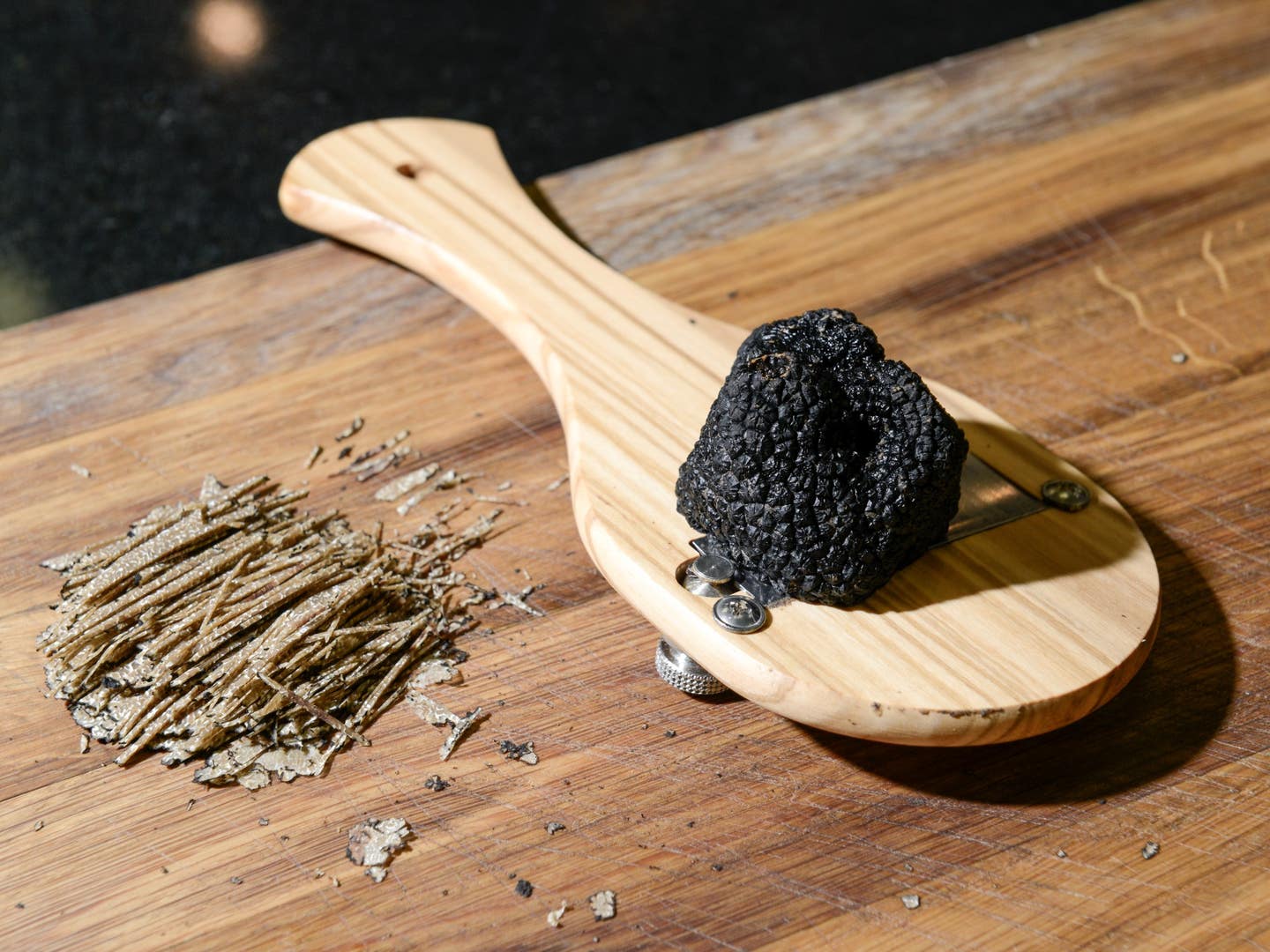
Searching High and Low for Truffles in Tuscany and Umbria
In Italy, the precious seasonal tuber is a way of life, from exclusive hotels to casual corner trattorias.
Early mornings are Mauro Nesi's best time. As he walks down the gentle hill to his workplace—an ancient oak forest—his tawny Lagotto Romagnolo dogs, Spritz and Brisa, scamper ahead of him. In the quiet, Nesi's senses are alive, attuned to the sounds of the birds and the leaves underfoot. He scans the trees and keeps his eyes trained to the ground, looking at the way the earth rises here and dips there. If it swells just a little he pauses. When Brisa darts towards a tree, tail wagging and nose to the ground, Mauro follows. He has to catch her quickly, before her claws can damage the truffle she's after. He speaks to the dog and gently nudges her out of the way so he can dig.
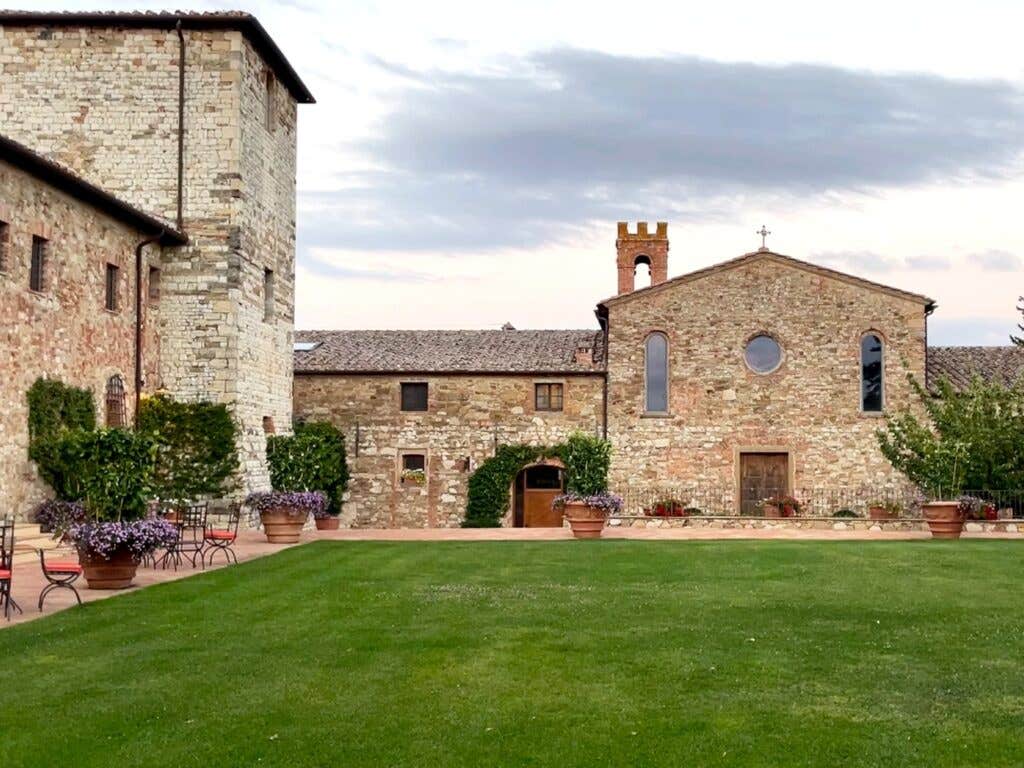
Mauro, who learned from his uncle to look for the clues of the forest, is now an experienced guide at Castello di Casole, a luxurious hotel in Siena, Tuscany. Guests can spend a morning hunting for truffles with him, and while the yield isn't guaranteed, there is almost always something to be found in these woods. Truffles—the aromatic, subterranean tubers—are the prize.
Beginning in June, Nesi and his guests might find scorzone (Tuber aestivum); known as summer truffles, these are the least fragrant—and least expensive—of the species. Around September though, the scorzone begin to mature and become more intensely flavored. At this point, they become known as Tuber uncinatum, or Burgundy truffles (a bit of a marketing misnomer, as both grow widely throughout Europe). There is some debate about whether these two truffles are entirely different species or morphotypes of the same, says David Yourd, a partner in Regalis Foods, an importer and purveyor based in New York City. "However, in the business, we distinguish between summer truffles and Burgundy truffles once the truffle hits a very mature state,” he explains. “The interior becomes more marbled, and changes from cream or light beige in color to a darker tan, with increased nutty and earthy aromas.” In Italy, Burgundy truffles can typically be found from mid-September through December or January. From mid-January to the end of April, mild white truffles known as marzuolo or bianchetto (Tuber albidum or Tuber borchii) begin to appear, as does the Tuber melanosporum, another prized black variety.
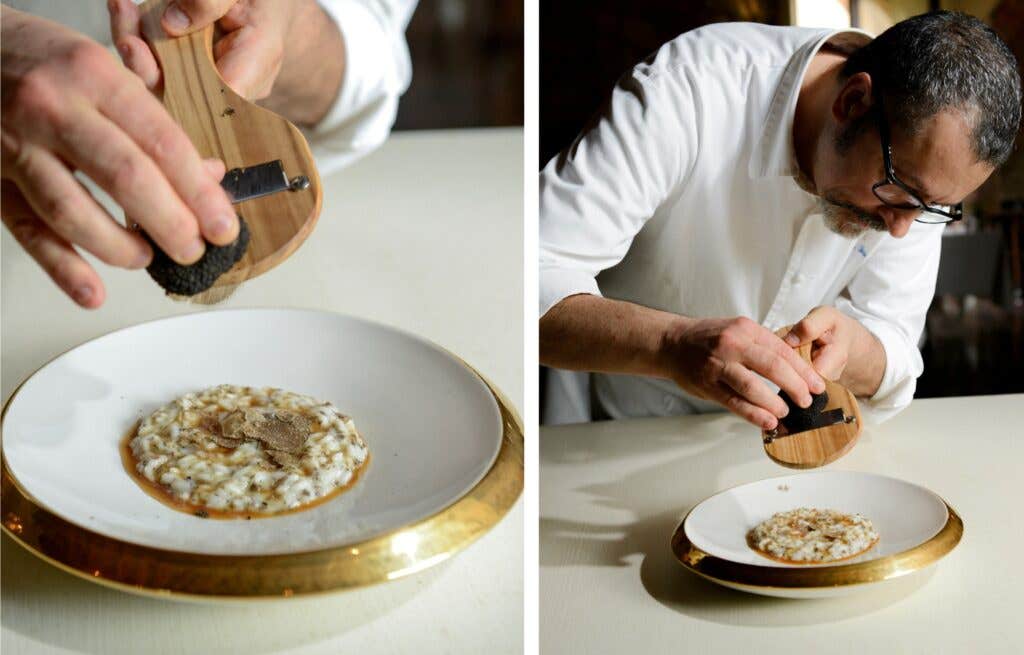
Back at the hotel's Ristorante Tosca, chef Daniele Sera works these local truffles into many elaborate dishes, performing a kind of wizardry to achieve layers of texture and flavor. This luxe experience is a world apart from the traditional truffled egg and pasta dishes served on trattoria tables throughout Tuscany, but for the guests who've traveled from far and wide to stay in the hotel’s elegant rooms, Sera does riff on traditional regional preparations. A sous vide egg is crowned with an ethereal cloud of Parmigiano-Reggiano spuma (foam). A stack of julienned black truffles, like a pile of straw, rests on top. The chef's risotto, on the other hand, is more classic, and made from just five ingredients: the only distraction from the truffle is the wide, golden rim of the bowl.
Two hours away, in neighboring Umbria, truffles are celebrated in much the same way they are in Tuscany, sprinkled over softly cooked eggs or hand-rolled pasta. At a small trattoria called Semiramide in the picturesque stone village of Melezzole, run by brother and sister Pierluigi and Chiara Pantaleoni, you’ll find these familiar dishes cooked with great care. It's food for the locals—and any lucky travelers who happen to find their way. The restaurant is tucked amongst trees and hung with potted plants. In the dining room, a central fireplace glows. Pierluigi makes fresh pasta daily; for fine ribbons of tagliolini, he warms truffle slices in olive oil to release the tuber’s flavor before tossing the pasta in the pan. The creamy tangle is then finished with more freshly shaved truffle. The dish is a loving homage to the seasonal ingredient. Simpler yet, the chef spoons a heap of softly scrambled eggs onto a plate before showering it with finely grated truffle. Priced at seven to 12 euros, these are a luxury most in the area can afford.
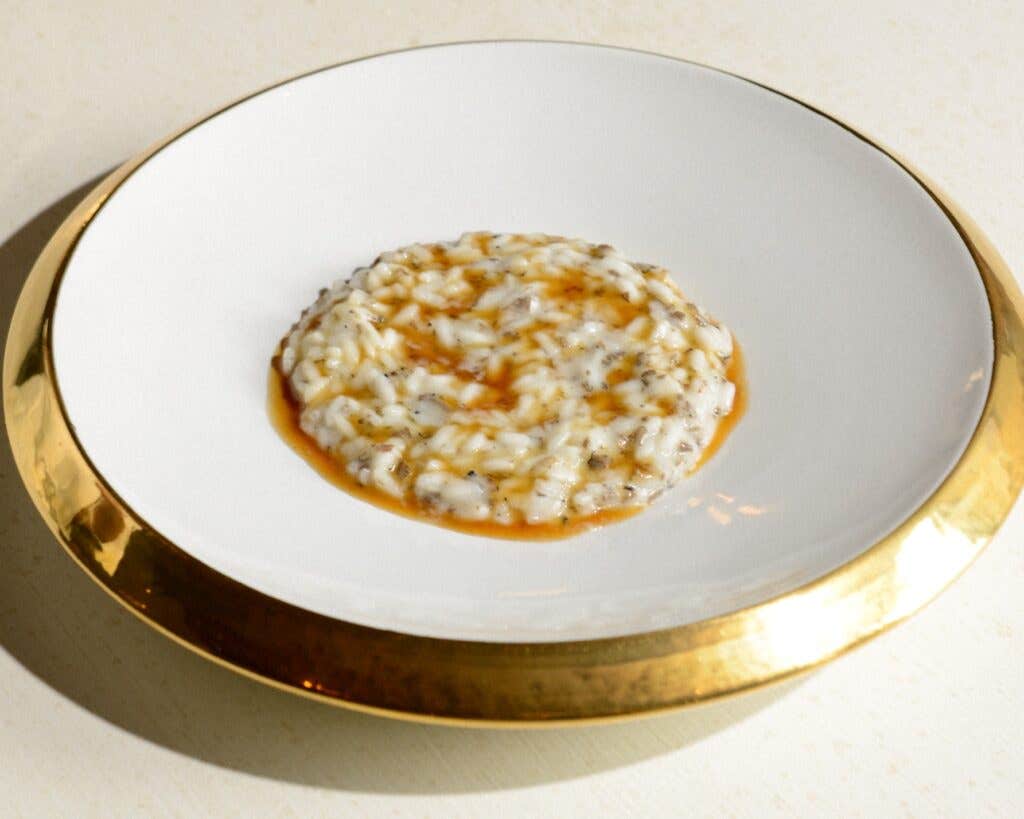
Beloved for its heady aroma, the truffle inspires equal passion in the field, where competition among the hunters who dedicate their lives in pursuit is fierce. For those in tune with the ways of the woods it's a beautiful calling, as depicted in the 2020 documentary, The Truffle Hunters. For the dealers who trade in this particular treasure and handle exorbitant amounts of money, the business can also be cutthroat, as dramatized in the moody 2021 Nicholas Cage thriller Pig, and exposed in Ryan Jacobs’ true crime book The Truffle Underground.
Adding to the high stakes of the truffle business is the unpredictability of Mother Nature, and (perhaps more predictable) human nature."Ecological factors affect the truffle seasons tremendously," Yourd explains. "Truffle harvests have been very small and prices very high this year. This is due to climate change and loss of wild forest habitat to vineyards and construction in truffle growing regions of Italy."
It can take years to develop a keen hunter’s eye, so for those who want to try their own luck, it's best to seek out an expert guide like Nesi. A tartufaio, like any other professional wildcrafter (the title preferred by many mushroom hunters and foragers), can show beginners what to look for. Just know that few will be willing to share their secret spots—those, of course, are closely guarded.
If you're lucky enough to get there, you could also walk into a hilltop Umbrian trattoria just as darkness descends, and let the local chefs do what they do best. Or, if instead you prefer to leave the foraging to the professionals and roll up your sleeves in your own kitchen, there are plenty of good retail and mail-order sources for fresh truffles. No passport or great culinary skill is required to enjoy the season's subterranean treasures.
Sourcing: Where to Buy Fresh Truffles
Always purchase truffles from a reputable source. Look for them in specialty stores or online and expect to pay for overnight shipping. Regalis Foods, a highly regarded supplier of wild edibles like truffles and other “exceptional, elusive food products,” was founded in 2012 and has rapidly become an essential fixture of New York City’s culinary landscape. The company’s website features collaborations with many of America’s most exciting chefs. Regalis’ truffles are directly imported, and handled expertly.
Urbani, originally founded in Italy in the 1850s by Constantine Urbani, has grown from a small husband-and-wife business into one of the most prominent truffle purveyors in the world. Look for Urbani products at Eataly’s markets, or order directly online.
How To Store Fresh Truffles
The key to storing truffles is moisture control. After being removed from the ground, a truffle loses three to five percent of its moisture each day. By contrast, there is also a risk of mold whenever excess moisture is involved. So unless you’re using your haul immediately, you’ll want to moderate hydration without trapping too much liquid. To do this, wrap the truffle in something absorbent, then place it in an airtight container—Nesi opts for a cloth handkerchief and a glass jar, but a couple of layers of paper towel inside a zip-topped freezer bag gets the job done too. (We recommend changing the paper every 12 to 24 hours.) Each truffle has a slightly different moisture content, but if stored properly, most black truffles will keep for up to 14 days; the more delicate white truffle will keep for less than a week. Ideally, all truffles should be enjoyed as quickly as possible.
How To Serve Truffles
Burgundy truffles are one of the most versatile truffle varieties, as they are comparatively moderate in price and well suited for both cooked and raw preparations (unlike the more umami-packed and volatile white truffles, which should never be heated). Burgundy truffles have deep, earthy notes, with a hint of roasted garlic and caramel. When warmed in hot butter or oil, the tubers’ aroma diffuses beautifully.
Truffles' flavors shine when incorporated into simple dishes, such as eggs, risotto, fresh pasta, and creamy root vegetable soups. A classic French preparation calls for placing thinly sliced truffles under the skin of poultry before roasting.
Truffles are usually sold clean, but if handling freshly dug specimens, Nesi suggests brushing away any dirt with a small, dry brush (a clean toothbrush works well). When ready to serve, shave them using a special truffle slicer or a vegetable peeler, or finely grate them directly over your dish using a sharp rasp.
How To Preserve Truffles
If you should have any extra truffle shaving or scraps leftover, there are a few things you can do to preserve them for future use in your own cooking, or for gifts:
- Truffle Butter: Bring a stick of unsalted butter to room temperature. In a medium bowl, beat the butter with grated or very finely chopped truffle pieces, then season to taste with salt. Spread the mixture onto a piece of parchment paper, then roll tightly into a log, twisting the ends to seal. Alternatively, spoon the compound butter into ice cube trays or another small container and refrigerate or freeze until ready to use.
- Truffle Oil: For short-term preservation, grate a piece of truffle into a small jar of olive oil, cover the jar, and refrigerate. This simple infusion can be drizzled over pasta or spooned over roasted meat, as you like. This oil must be kept refrigerated, to avoid the risk of botulism.
- Truffle Salt: Grind truffle scraps with coarse sea salt in a small food processor or spice grinder. The salt dehydrates and preserves the truffle, creating a fragrant and shelf-stable seasoning that will keep its potency for up to 2 months. Store in an airtight container away from direct heat and sunlight.
Recipes
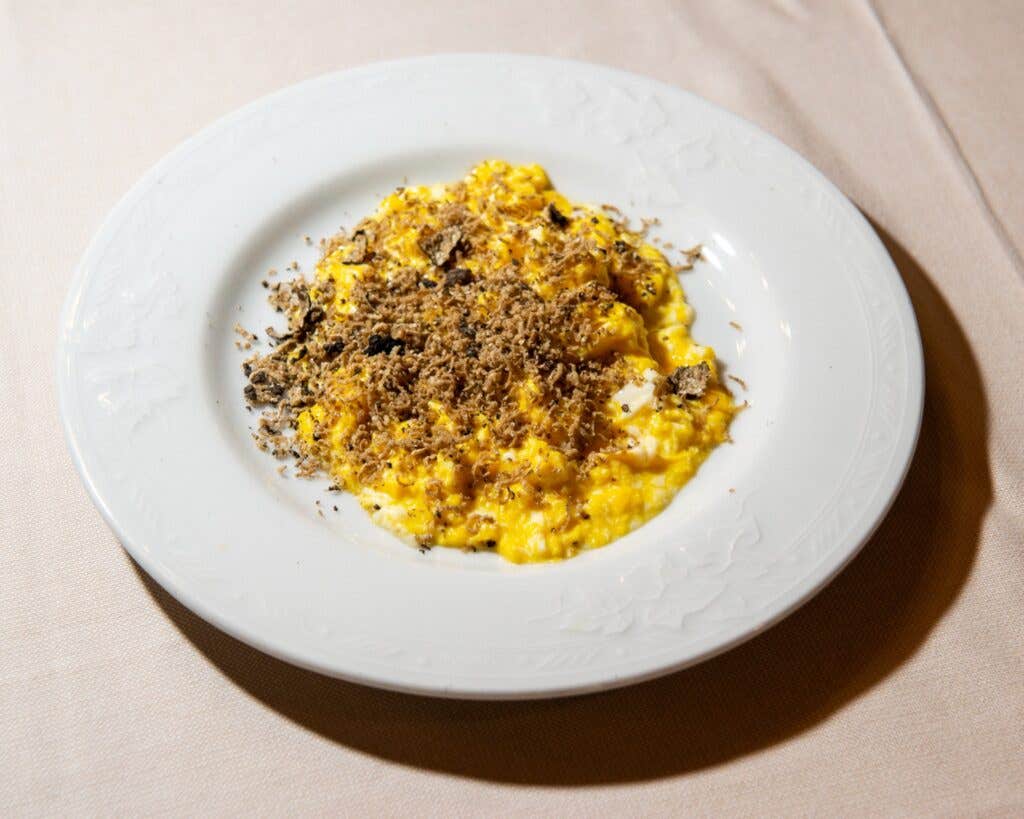
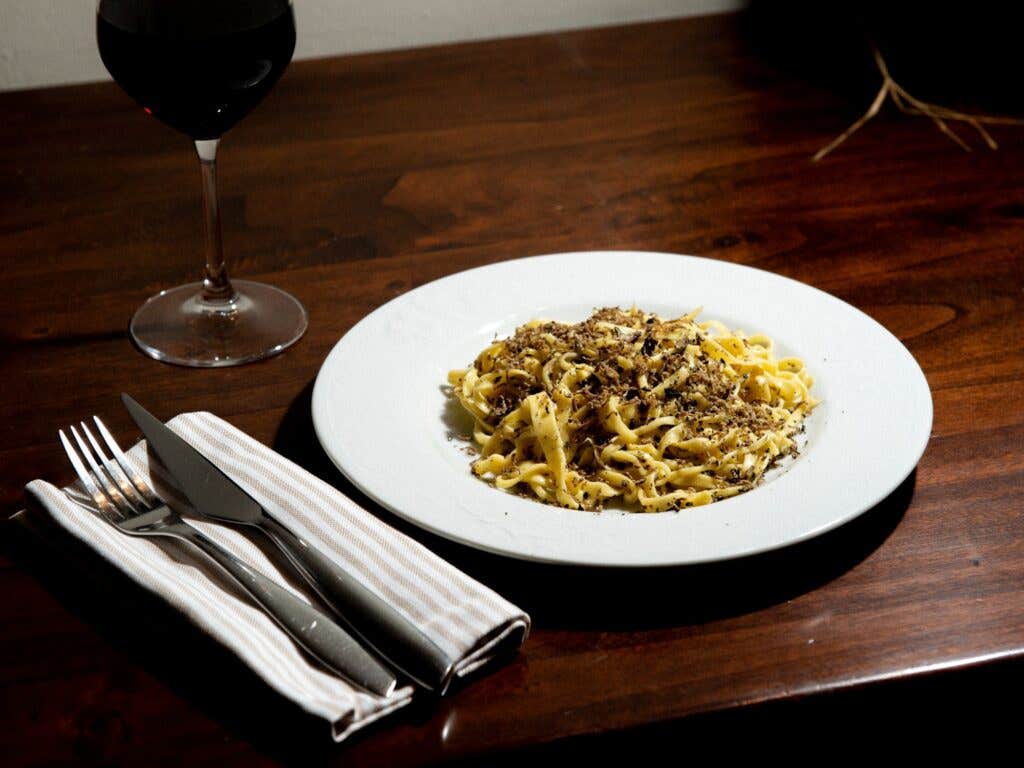
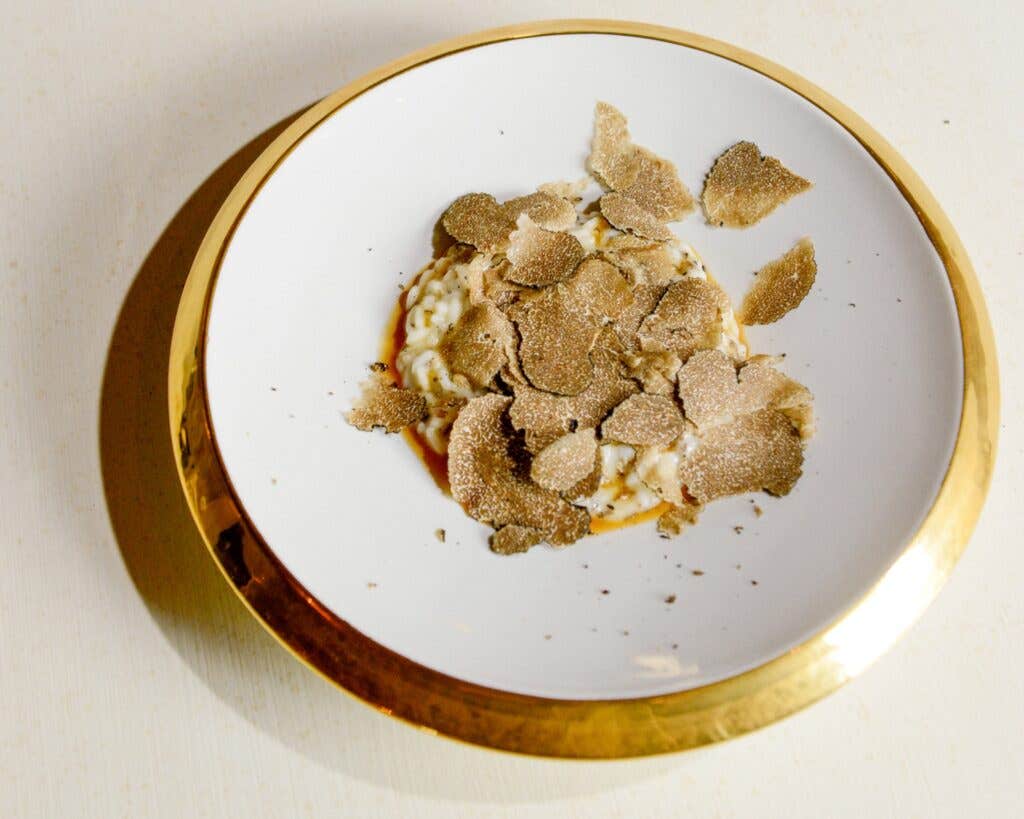
Keep Reading
Continue to Next Story










